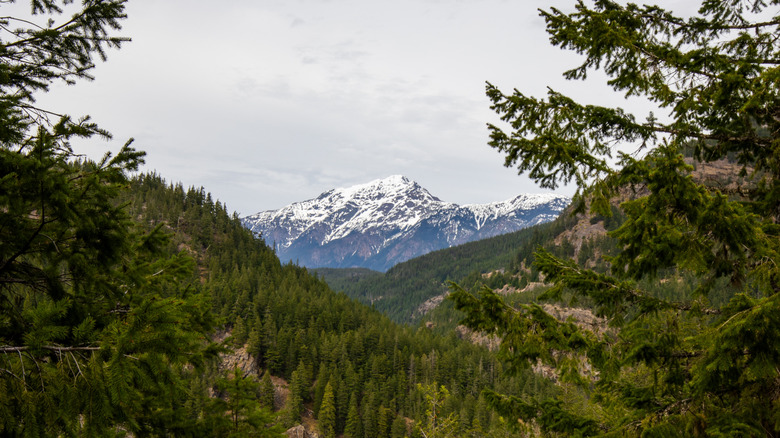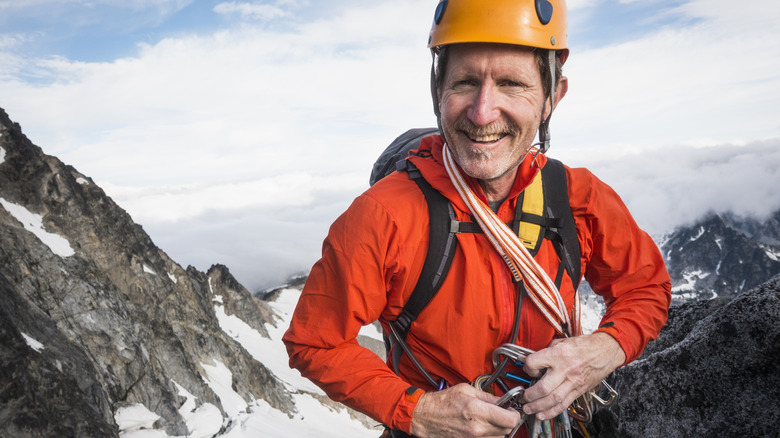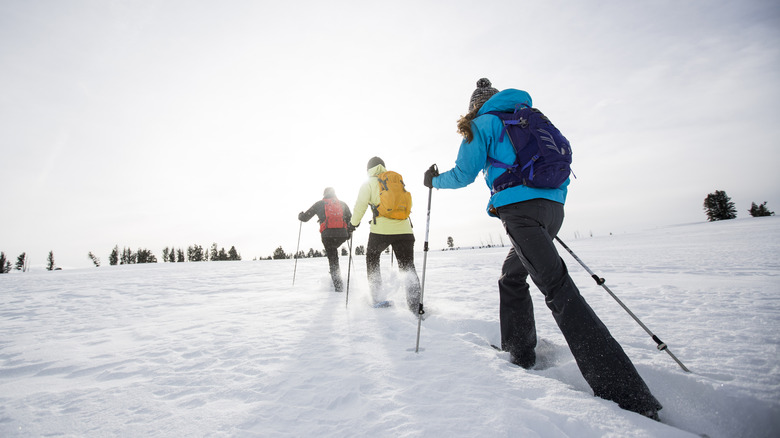Washington's Dangerous Summit Offers A Thrilling Adventure For Hikers Who Dare To Tackle It
The United States has no shortage of stunningly beautiful, but incredibly dangerous hikes. From the slippery summit of Half Dome in Yosemite to a popular east coast hiking trail that is not for amateur hikers, hiking in the U.S. is filled with its fair share of thrilling, albeit risky, adventures. However, there is one trail that has even the most experienced hikers biting their nails: Jack Mountain in Washington State.
A lonely summit located near Northern Cascades National Park, Jack Mountain stands at 9,069 feet and is by far the tallest promontory in the region. Its terrain is rough and often covered in layers of ice and snow. Hovering between a Class 4 or Class 5 mountain depending on what route you take, climbing Jack Mountain is far more involved than an ordinary day hike. It requires exposed climbing on loose surfaces, navigating steep terrain, and even dealing with snow. Climbing gear and experience is needed when it comes to conquering this mountain. It is not a trek for beginners.
To give you an idea of the character of this mountain firsthand, we're pulling a quote from experienced climber Josh Lewis, who, writing for SummitPost.org, says "Jack Mountain is rarely ever climbed due to its all around alpine difficulty ... But [my climb] still ended up being an epic trip with many exciting moments as well as getting on the edge of my comfort level. This mountain lives up to its reputation." Interested? We thought so.
Climbing Jack Mountain in Washington
There are several approaches climbers can make to Jack Mountain, each offering their own set of challenges. Many climbing parties prefer to begin their journey at the Jerry Lakes to the southeast of the mountain. This route takes hikers up about 7,200 feet of elevation gain, beginning at the Jerry Lakes Basin, climbing the saddle of Crater Mountain, before finally arriving at the base of Jack Mountain. From here, climbers will tackle the south face of the mountain.
This is by far the easiest route up the mountain. The Nohokomeen Glacier takes up the entire north face in an almost vertical, icy climb. Meanwhile, the south face, while still steep and filled with gullies, loose terrain, and snowfields, is the easier terrain, especially if you're not set up with ice trekking gear. Climbers who arrive at Jack's summit will also have to contend with an adrenaline-pumping knife's edge ridge – which is a skinny path with steep drops off of either side. The reward is expansive, nearly endless views of the Cascade Mountains.
As far as when to tackle this mountain, August or September is your best bet. This time of year has the least amount of snow. While the loose rock faces are more exposed, you are less likely to get caught in a storm or severe temperatures. Experienced and capable winter climbers can climb Jack Mountain in the off-season, but they will be met with their fair share of slippery snow and ice.
Gear and safety considerations when climbing Jack Mountain
As thrilling as a climb up Jack Mountain is, you can't do it without the right gear. As previously mentioned, this climb is not for the faint of heart or the inexperienced. This means standard day-hiking equipment simply won't do. Full alpine hiking gear is needed to tackle Jack Mountain with any kind of success. This means having the right boots, crampons, skis or snowshoes, trekking poles, ice axes, ropes, carabiners, and rappels. Remember, the terrain is loose and steep. A single error or lapse in concentration could prove to be fatal.
Climbers would do well to check local weather forecasts and make sure they pack properly for all manner of different temperatures. Having base layers, jackets, socks, and other camping gear is essential, as this will be a multi-day hike. As such, food, water, first aid, and shelter are vitally important.
Plus, there is the fact that you will be in the Northern Cascades. The North Cascades National Park sees 60.2 deaths per 1 million visitors, 40.7% of which are caused via falling from hiking or climbing accidents (via Elk & Elk). While this may make the adventure to Jack Mountain seem all the more enticing for thrill seekers, it remains good practice to be as prepared as possible to tackle this ridge. If you do, you will hopefully be rewarded with the adventure of a lifetime.


